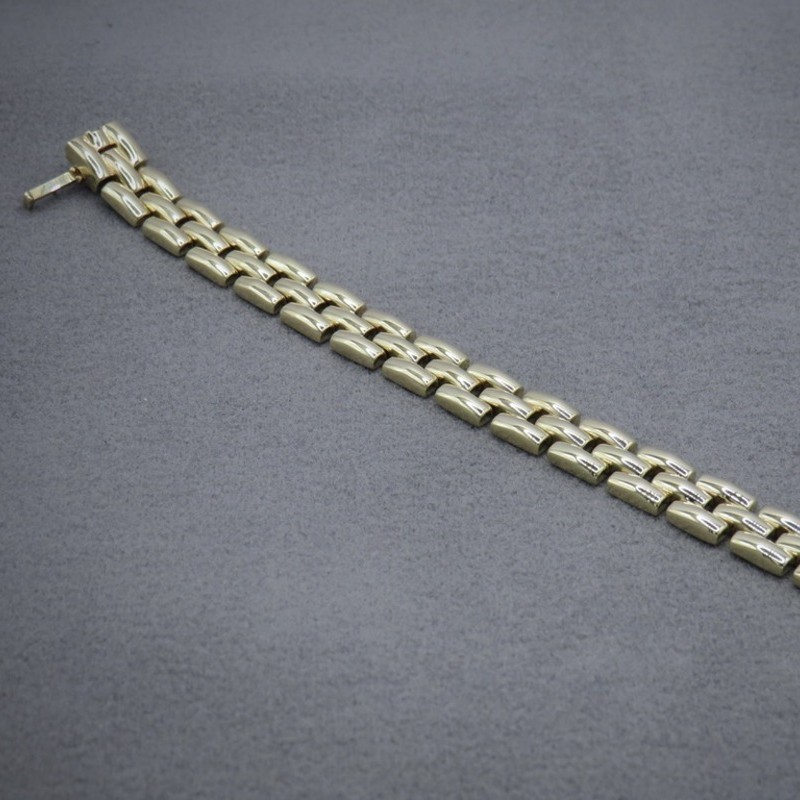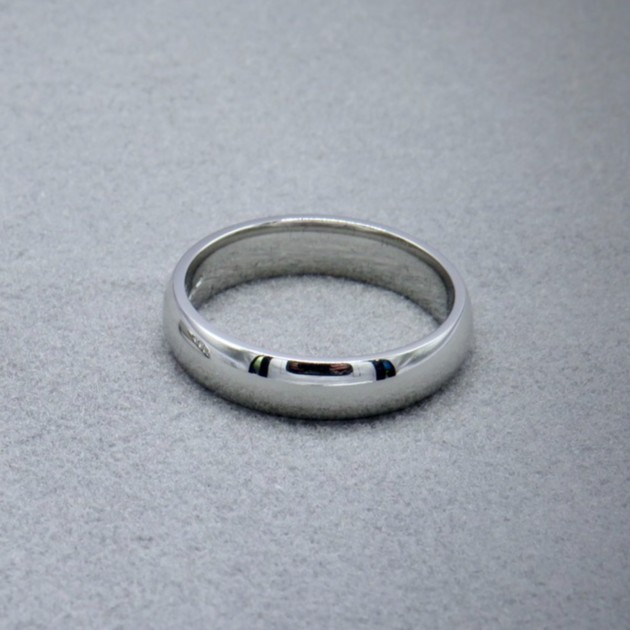Metals
Purity and Fineness
Precious metals are sorted by the carat of the metal – not to be confused with the carat weight of a gemstone! The carat in this instance is the quantity of pure metal contained within 24 parts. For example, gold that is 75% pure – 18 parts gold to six parts of an alloying metal – is 18 carat Gold. The different purities and alloys used will impact colour and durability. So, 9ct gold is very durable and therefore perfect for everyday use. It also has a different colour to 18ct gold, which is a much deeper, richer, more yellow colour due to the higher levels of pure gold. Hallmarks will reflect the fineness of the metal in jewellery and is a way to decipher what your metal is if you have inherited a piece.
Gold
Gold has long been seen as the King of Metals and given its recent surge in price, its status has been firmly secured. A status symbol of wealth and power as well as financial means, gold has been valued for its beauty and rarity for centuries. In terms of jewellery, there are severla options available to you from durability to colour.
Pure gold (24k) is too soft for parctical wear so it is mixed with other metals (alloys) to increase durability and to create different colours. The most common are yellow, white, and rose but you can get black, blue, purple and green gold too! The metal alloys used will determine the end colour. For yellow gold, alloys such as silver and copper are used. For white gold, silver, zinc or palladium are used.
The natural hue of white gold is arguably a better shade of white, but many high street jewellery will rhodium plate jewellery to give it a very bright, sharp whiteness. Over time it wears off and will need replating in order to return it to the original colour, but there is no 'need' to plate natural white gold.
Rose gold is created by using copper as the alloying metal, giving it a pink or rose appearance. More copper results in a stronger pink colour (9k rose gold) and less copper will result in a subtler pink (18k rose gold). It has become increasingly popular for it's romantic and vintage appeal.
Platinum
Platinum is a durable and hypoallergenic metal that is highly sought after for engagement and wedding rings due to its ability to withstand daily wear and tear. Some individuals prefer to have the stone setting in platinum and the rest of the ring in gold, as it provides an added sense of security.
Platinum is a dense metal, weighing almost 20% more than 18ct white gold, giving it a substantial feel. It is also more resistant to scratching than gold, although it is more prone to denting. Additionally, platinum can be polished to a high shine and is highly resistant to tarnishing. While it used to be more expensive than gold, 18ct white gold is now priced higher. Platinum is typically hallmarked as 950, indicating it is 95% pure, but it is also available in 850, 900, and 999 variations.

9K Yellow Gold Bracelet
Rose Gold and Morganite Ring

Platinum Wedding Ring
Silver
Silver, as well as gold, has been a highly prized metal for centuries. Silver is the least costly among the precious metals and also the most reactive. This means that it will tarnish over time when it is not worn, developing a black coloring. Fortunately, this tarnishing process does not harm the metal itself and can be easily removed to restore the piece to its original shiny state.
Sterling silver is the most readily available form of silver, with a hallmark of 925 which indicates it is 92.5% pure silver mixed with 7.5% other metals, usually copper. There is also Continental Silver, stamped at 800, comprising 80% silver and 20% other alloys. This type of silver is commonly found in Europe, particularly in countries like Italy and Germany. Silver is almost half as dense as gold or platinum, making it noticeably lighter.
While silver is beautiful, it is also the softest of the precious metals and may not be ideal for fine jewellery due to its susceptibility to denting, bending, or scratching. Earrings and pendants tend to be more protected than bracelets and rings, so caution is advised when setting expensive gemstones in the latter. Overall, silver provides the wearer with the elegant appearance of white metals at a more budget-friendly price point. Large, chunky bracelets and rings can be designed without stones to achieve a desired look.
Palladium
Palladium, a relatively recent addition to the precious metal market, was granted hallmark status in 2009. Belonging to the platinum family, it is a byproduct of platinum mining. This lustrous silvery white metal is often likened to platinum and white gold. In the UK, there are two standard purities available - 50% and 95% (marked as 500 and 950). Palladium is significantly lighter than platinum, weighing about 40%, and is 12% harder. This characteristic makes it an ideal choice for wedding bands, particularly for men who may not be as cautious with their jewelry. Despite being more affordable and lighter than platinum, one might wonder why it is not more commonly used in jewellery. The reason lies in its difficulty to work with, making intricate designs and gem settings more challenging. Nevertheless, palladium is durable, easy to maintain, and a cost-effective option for simple bands and those on a tighter budget.
Titanium
Titanium is a popular choice for men's jewellery due to its strength and lightness. It is much less dense than silver, making it feel significantly lighter than gold and platinum. This makes it a great option for those who are not comfortable with heavy jewellery, especially men wearing wedding bands. Additionally, titanium is hypoallergenic, making it suitable for pierced jewellery.
By adding small amounts of aluminum and vanadium, its durability and scratch resistance can be increased. However, working with titanium is challenging, requiring mechanical cutting, shaping, and assembly. It's also important to note that titanium rings cannot be resized, so it's crucial to ensure a proper fit. The cost of extracting and manufacturing titanium is high, which contributes to its price being comparable to other precious metals.